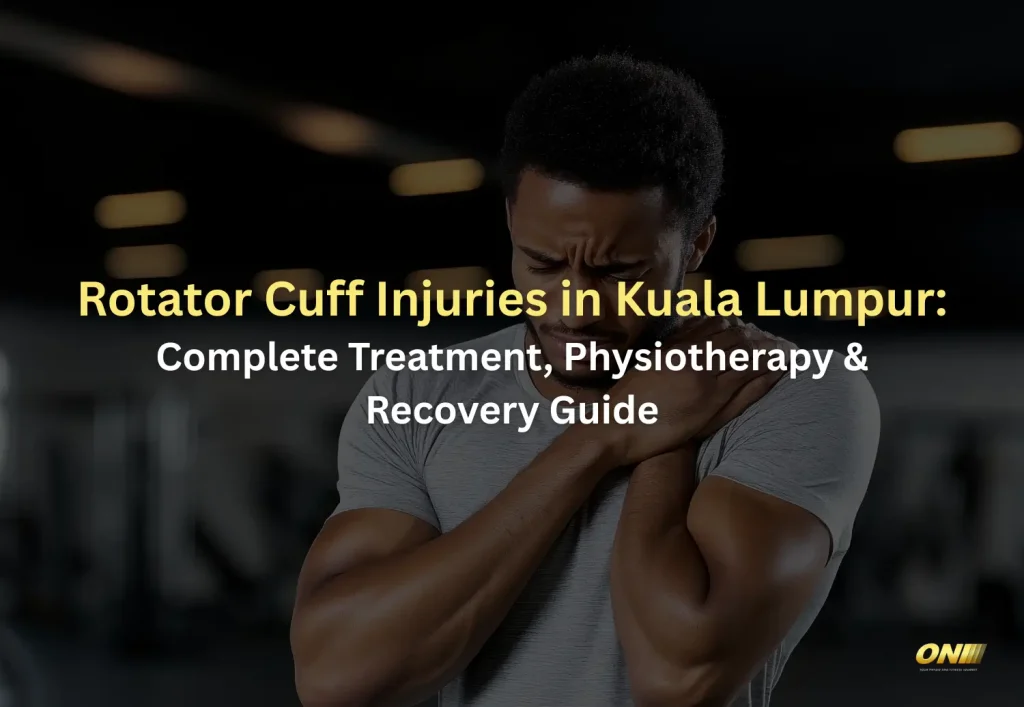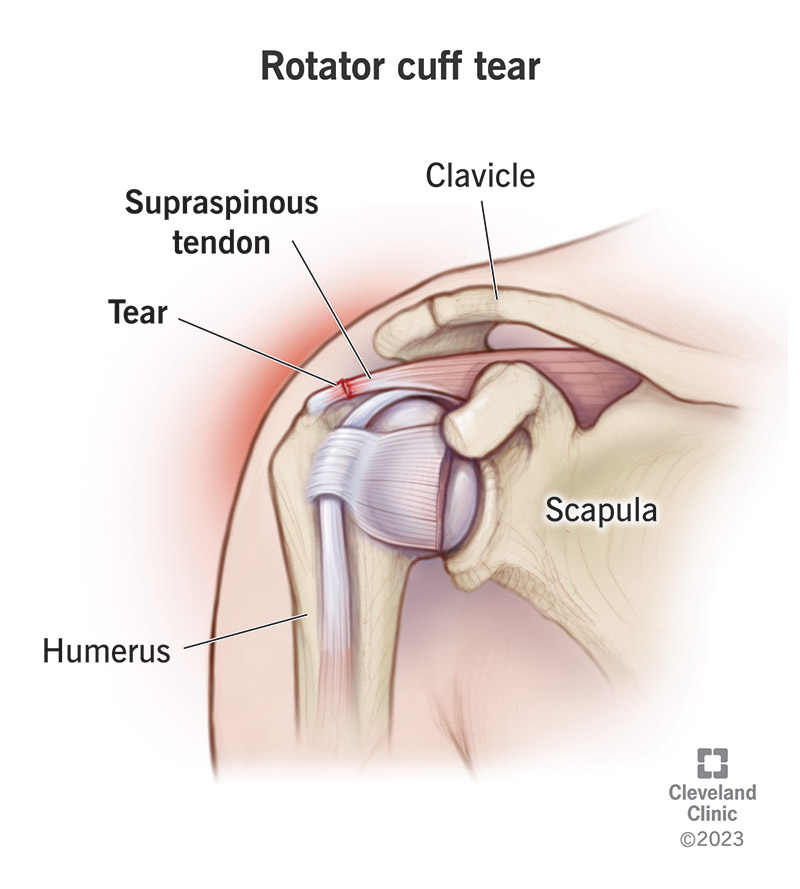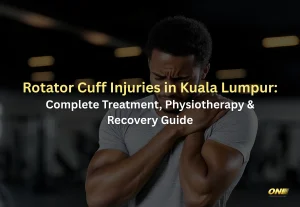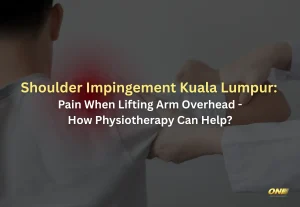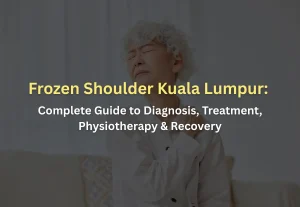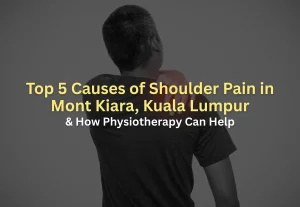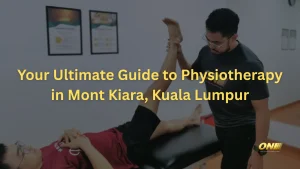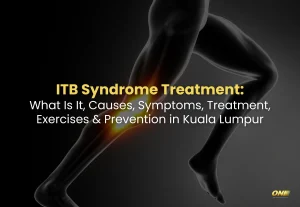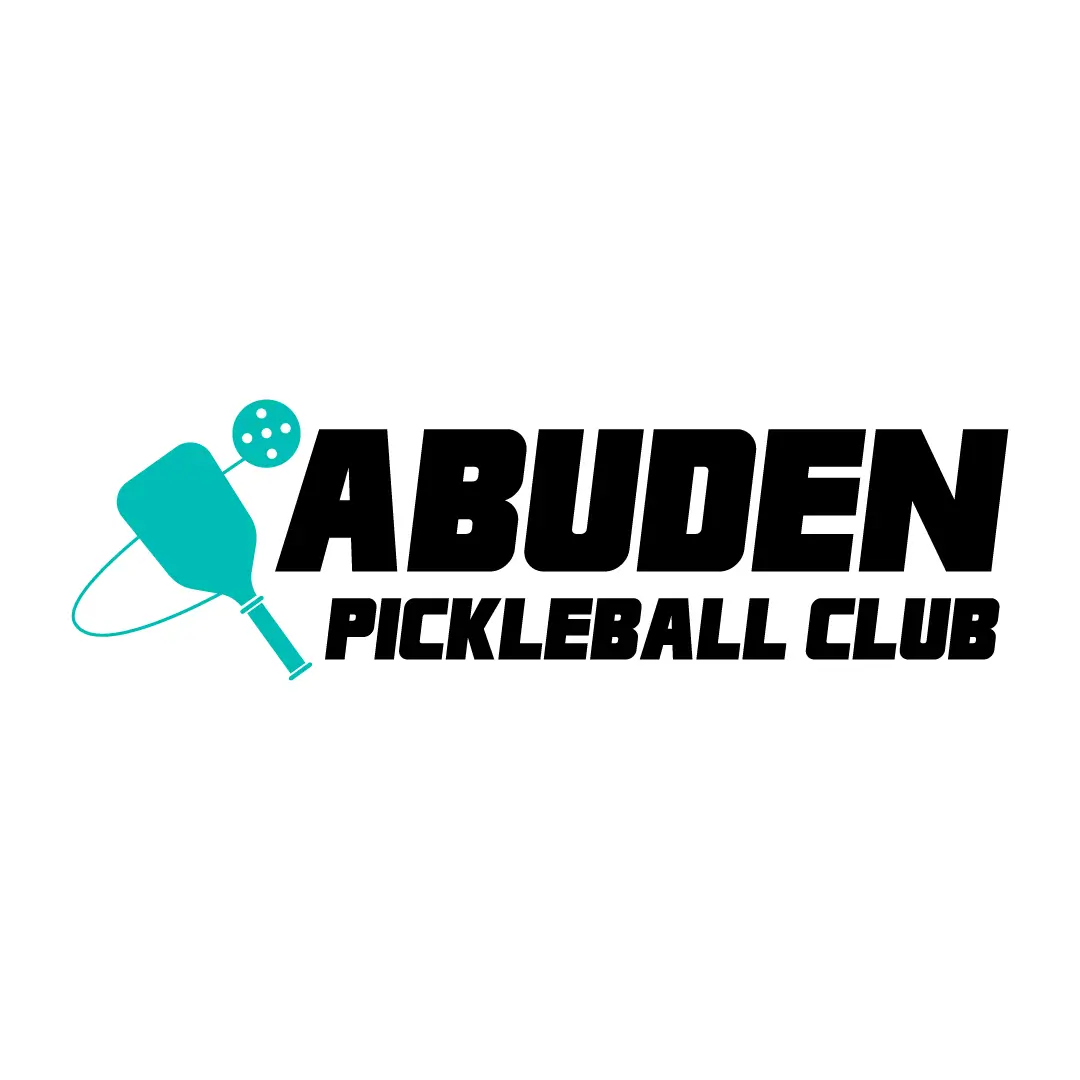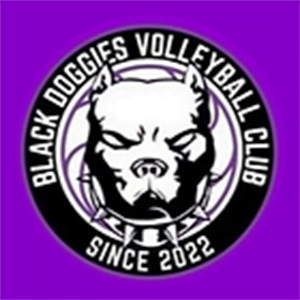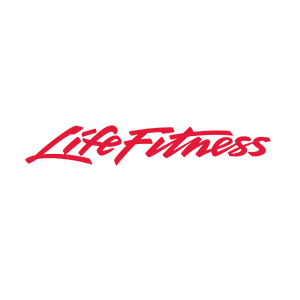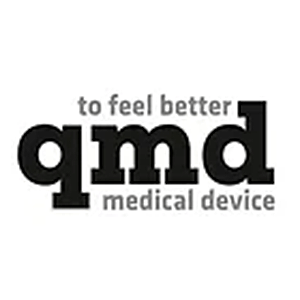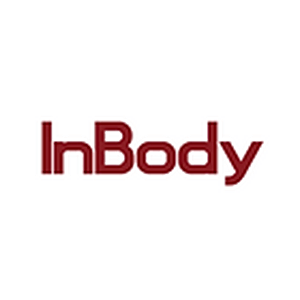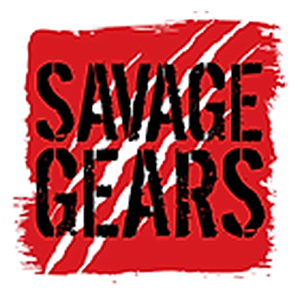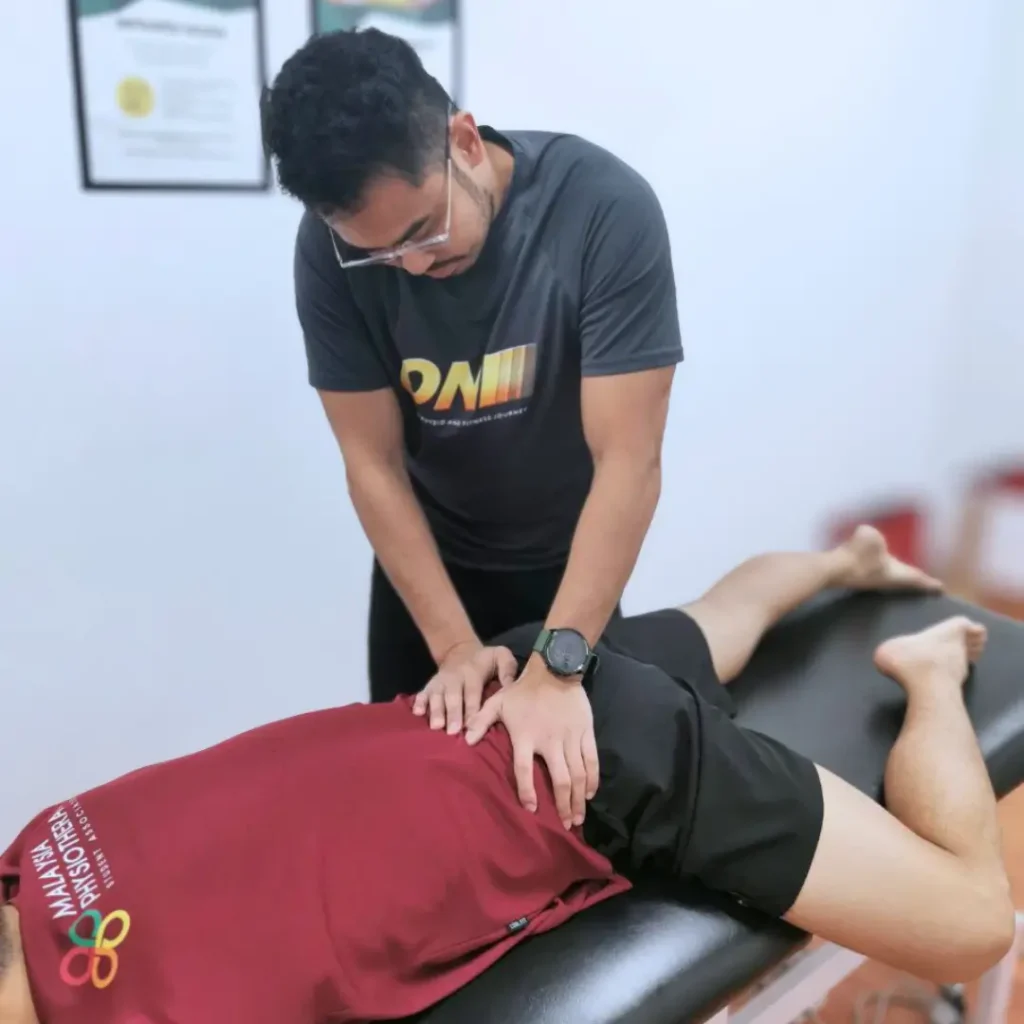Table of Contents
Your shoulder has been bothering you for weeks. At first, you brushed it off as stiffness. But it’s getting worse.
Maybe you can’t lift your arm to hang clothes. Your badminton game has become impossible. Or you’re awake at 3 AM because the pain won’t let you sleep.
That nagging shoulder pain could be a rotator cuff injury. And waiting only makes it harder to fix.
At ONI Physio Fitness in Mont Kiara, Kuala Lumpur, people come to us frustrated and worried they need surgery. Here’s the good news: most rotator cuff injuries don’t require surgery. With proper physiotherapy, most people recover completely.
This guide explains what’s happening in your shoulder, why it hurts, and how to fix it. You’ll understand your treatment options and the realistic timeline for recovery.
Let’s get your shoulder back to full strength.
What Are Rotator Cuff Injuries?
Let’s start with the basics. Your rotator cuff isn’t just one thing. It’s actually a group of four muscles and their tendons that wrap around your shoulder joint like a cuff on a shirt sleeve. These four muscles work together to keep your shoulder stable and help you move your arm in different directions.
The four rotator cuff muscles are:
- Supraspinatus (helps you lift your arm away from your body)
- Infraspinatus (rotates your arm outward)
- Teres minor (also helps with outward rotation)
- Subscapularis (rotates your arm inward)
When we talk about rotator cuff injuries, we’re usually referring to damage to one or more of these muscles or tendons. This damage can happen suddenly (like from a fall) or develop gradually over time (from repetitive movements or age-related wear and tear).
Here’s what makes rotator cuff injuries tricky. Your rotator cuff sits in a tight space under a bone called the acromion. When things aren’t working properly, the tendons can get pinched or rubbed in this space. This leads to inflammation, pain, and sometimes something called Subacromial Pain Syndrome (SAPS).
Think of it like a rope rubbing against a rough edge. Over time, the rope frays. The same thing happens to your rotator cuff tendons when they’re constantly rubbing against the acromion.
Types of Rotator Cuff Injuries
Not all rotator cuff injuries are the same. Here’s what we commonly see:
Supraspinatus Tears or Tendinopathy
This is the most common rotator cuff injury. The supraspinatus tendon is often the first to show wear and tear because of its position and the stress it handles. You’ll typically feel pain when lifting your arm out to the side or reaching overhead.
Infraspinatus Injuries
These affect your ability to rotate your arm outward. If you’re struggling to reach behind your back or having trouble with sports that involve throwing or rotation, this might be the culprit.
Subscapularis Tears
Less common but still important. This muscle sits at the front of your shoulder. Injuries here can make it hard to reach across your body or rotate your arm inward.
Teres Minor Injuries
The smallest of the four, this muscle works with the infraspinatus. Injuries are rare but can happen alongside other rotator cuff problems.
Subacromial Impingement Syndrome (SIS)
This is when your rotator cuff tendons get pinched in the space under your acromion. It’s often caused by poor posture (rounded shoulders from desk work) or muscle imbalances. The constant pinching leads to inflammation and can eventually cause tearing.
Rotator Cuff Tendinopathy
Think of this as wear and tear of the tendons. The tendon degenerates over time, becoming weaker and more prone to injury. It’s common in people over 40 and those who do repetitive overhead activities.
Partial vs Full Thickness Tears
A partial tear means the tendon is damaged but not completely torn through. A full thickness tear means the tendon has torn completely, creating a hole. The good news? Many partial tears and even some full thickness tears can heal well with physiotherapy.
Rotator Cuff Injuries Symptoms: What KL Residents Should Watch For
How do you know if you have a rotator cuff injury? Here are the telltale signs:
Pain with overhead activities
Reaching up to adjust the air conditioning, getting something from a high cabinet, or serving in badminton becomes painful or impossible.
Night pain
This is a big one. Many people with rotator cuff injuries can’t sleep on the affected shoulder. You might wake up multiple times during the night from the pain.
Shoulder clicking or popping sounds
You hear or feel clicking, grinding, or popping when you move your arm. Sometimes it’s painless, sometimes it hurts.
Weakness
Your shoulder feels weak. You struggle to lift things you used to handle easily. Your arm might even feel like it’s going to give out.
Pain radiating down the arm
The pain doesn’t stay in your shoulder. It travels down the side or front of your upper arm, sometimes reaching your elbow.
Difficulty with daily activities
Simple things become challenging. Putting on a jacket, washing your hair, reaching for your seatbelt, or using your phone for extended periods all hurt.
Stiffness and reduced range of motion
Your shoulder feels tight. You can’t reach as far behind your back or lift your arm as high as you used to.
If you’re nodding along to several of these, it’s time to get your shoulder checked properly.
Causes of Rotator Cuff Injuries in Kuala Lumpur
Understanding why rotator cuff injuries happen helps prevent them and guides treatment. Here’s what we see most often in our KL patients:
Acute trauma
Falling on an outstretched arm, a direct blow to the shoulder, or suddenly lifting something too heavy can tear the rotator cuff. This happens in sports, accidents, or even just from an awkward movement.
Repetitive overhead movements
If your job or sport involves repeated overhead motions, you’re at higher risk. Think painters, swimmers, badminton players, or anyone doing lots of overhead pressing at the gym.
Age related degeneration
As we age, our tendons don’t heal as well. Blood supply to the rotator cuff decreases. The tendons become more brittle. This is why rotator cuff injuries are more common after age 40.
Poor posture from desk work
Here’s where we need to talk about something we see constantly in KL office workers. Spending hours hunched over a laptop creates what we call rounded shoulders and forward head posture.
Let me explain what happens. When your shoulders roll forward, your shoulder blade (scapula) moves into a bad position. This changes the angle of your shoulder joint and reduces the space under your acromion. Now your rotator cuff has less room to move. Every time you lift your arm, the tendons get pinched and rubbed against the acromion.
Do this thousands of times (which happens when you’re working at a desk), and you create chronic irritation. This leads to inflammation, then Subacromial Impingement Syndrome, and eventually tendinopathy or tearing. Your body also lays down scar tissue in response to the constant irritation, making the space even tighter.
Sports activities common in KL
Our patients love staying active, but certain sports put extra stress on the rotator cuff:
- Badminton (overhead smashes)
- Swimming (repetitive arm movements)
- Tennis (serving and overhead shots)
- Gym training, especially CrossFit and heavy overhead lifting
- Golf (the swing mechanics can strain the shoulder)
The problem isn’t these activities themselves. It’s doing them with poor technique, inadequate warm up, or without proper shoulder strength and stability.
Risk Factors for Rotator Cuff Injuries: Special Considerations for KL Residents
Some people are more likely to develop rotator cuff injuries. Understanding your risk helps you take preventive action.
Age (40 years and older)
After 40, your risk increases significantly. The tendons naturally weaken with age, and small tears that used to heal easily might not anymore.
Occupational factors
Certain jobs in KL put shoulders at higher risk:
- IT professionals and office workers (poor posture)
- Healthcare workers (lifting patients, repetitive movements)
- Teachers (writing on whiteboards)
- Hairdressers and beauticians (arms elevated for long periods)
- Construction workers (overhead work)
Sports activities
If you regularly play these sports, pay attention to your shoulder health:
- Badminton (very popular in KL and tough on shoulders)
- Swimming (repetitive overhead strokes)
- Tennis or squash
- Gym training, especially CrossFit or Olympic lifting
- Golf
Sedentary lifestyle in air conditioned environments
Here’s something unique to KL living. We move between air conditioned spaces all day. Our muscles don’t warm up naturally. We sit more than we should. This combination leads to tight, weak muscles and poor movement patterns.
Poor ergonomic setup
Working from home became normal for many KL residents. Unfortunately, many people work from their couch or dining table with terrible posture. Your shoulders pay the price.
Lack of proper warm up
KL’s hot and humid weather makes people think they don’t need to warm up before exercise. Wrong. Your muscles might feel warm, but they’re not prepared for intense activity. This increases injury risk.
Rotator Cuff Injuries Diagnosis
Getting the right diagnosis is the first step to proper treatment. At ONI Physio Fitness, we take our time with assessment. No rushed appointments here.
Clinical assessment by a physiotherapist
We start by listening to your story. When did the shoulder pain start? What makes it better or worse? What are you struggling to do? This information is often more valuable than any test.
Physical examination
We’ll watch how you move your shoulder and check for:
- Range of motion (how far you can move in different directions)
- Strength testing (comparing both shoulders)
- Pain patterns (where exactly does it hurt?)
- Posture assessment (are those shoulders rounded?)
- Muscle imbalances (some muscles too tight, others too weak?)
When imaging is needed?
Most rotator cuff injuries can be diagnosed clinically without imaging. But sometimes we recommend:
- X rays (to rule out bone problems or arthritis)
- MRI (to see soft tissue damage clearly)
- Ultrasound (good for seeing tears and inflammation)
Rotator Cuff Injuries Treatment Options
Let’s talk about your options. When you have a rotator cuff injury, several treatment approaches exist:
Physiotherapy
This should be your first choice for most rotator cuff injuries. It’s non-invasive, effective, and addresses the root cause of your problem, not just the symptoms.
Medication
Anti-inflammatory drugs can help manage pain and reduce inflammation. They’re useful in the early stages but don’t fix the underlying problem.
Corticosteroid injections
These can provide temporary pain relief by reducing inflammation. However, they don’t heal the injury and repeated injections can actually weaken tendons over time.
Surgery
Arthroscopic rotator cuff repair is an option for severe tears. But here’s the thing: 80 to 90% of rotator cuff injuries respond well to physiotherapy. Surgery should be a last resort, not the first option.
So why do we recommend physiotherapy as your first line of treatment? Because it works, it’s safe, and it gives you tools to prevent the problem from coming back. Let’s talk about what makes our approach at ONI Physio Fitness different.
Rotator Cuff Injuries Physiotherapy: The ONI Physio Fitness Approach
Here’s where we need to be honest with you. Not all physiotherapy is the same. You’ve probably heard stories from friends who went for physio and just got a heat pack, some massage, and were sent home. Maybe they felt better for a day or two, then the pain came right back.
That’s not how we work.
Why Our Rotator Cuff Injuries Physiotherapy in Mont Kiara, KL Stands Out
We don’t just treat your pain. We fix the problem.
Many centers focus on making you feel better today. We focus on making you better for life. Here’s what that means:
Active recovery, not passive treatment
Yes, we use manual therapy and pain relief techniques. But that’s just the beginning. The real healing happens when we get your shoulder moving properly and build strength. You’re an active participant in your recovery, not just someone lying on a treatment bed.
Evidence based approach
We stay updated with the latest research. Our treatment protocols are based on what actually works, not outdated methods or guesswork.
Individualized treatment plans
Your shoulder injury isn’t the same as the next person’s. Your goals aren’t the same either. Maybe you need to get back to badminton. Maybe you just want to sleep through the night. We design your treatment around YOUR needs, not a cookie cutter protocol.
We find the root cause
A rotator cuff injury is often a symptom, not the root problem. We dig deeper. Is your posture the issue? Do you have muscle imbalances? Is your shoulder blade not moving properly? Are you using poor technique in your sport or workout? We figure out WHY this happened so we can prevent it from happening again.
Whole body approach
Your shoulder doesn’t work in isolation. We look at your neck, your upper back, your core, and so on. Everything is connected. This comprehensive approach gets better results.
Integration of fitness and physiotherapy
This is what makes ONI Physio Fitness special. We’re not just a physio clinic. We understand fitness, sports performance, and how to get your body functioning at its best. We bridge the gap between rehab and performance.
Treatment Modalities We Use For Rotator Cuff Injuries
We have many tools in our toolkit:
- Manual therapy (hands on techniques to improve joint mobility and reduce muscle tension)
- Soft tissue release (targeted work on tight muscles and trigger points)
- Dry needling (for stubborn muscle knots and pain)
- Therapeutic ultrasound (promotes healing in tendons)
- Kinesiology taping (supports your shoulder and improves awareness)
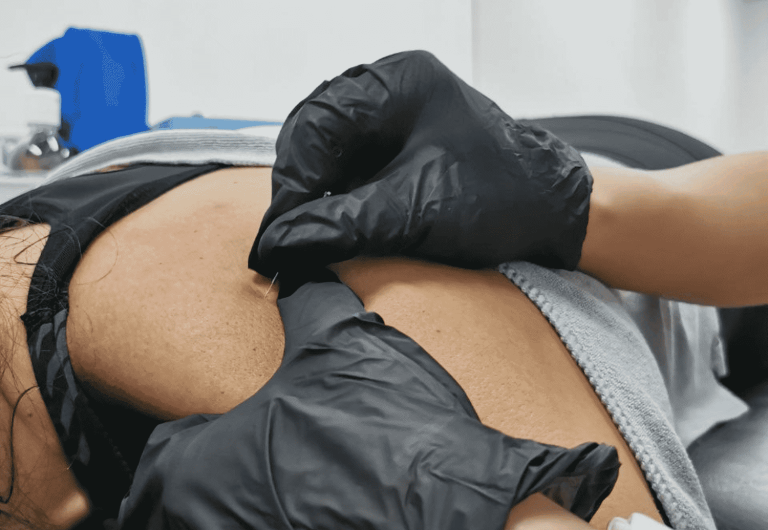
But here’s what you need to understand. These modalities are helpful, but they’re not the main event. They support the real hero of your recovery: progressive exercise therapy.
We combine everything you need for complete recovery:
Hands on treatment to reduce pain and restore normal movement. This gives us a window to start strengthening.
Progressive exercise therapy to build strength, stability, and resilience. This is what creates lasting results.
Education so you understand what’s happening and how to help yourself. Knowledge is power.
Activity modification to keep you active while you heal. We don’t believe in complete rest unless absolutely necessary.
Prevention strategies so this doesn’t happen again. One rotator cuff injury is enough.
Why Active Exercise Therapy is Our Foundation For Shoulder Injuries?
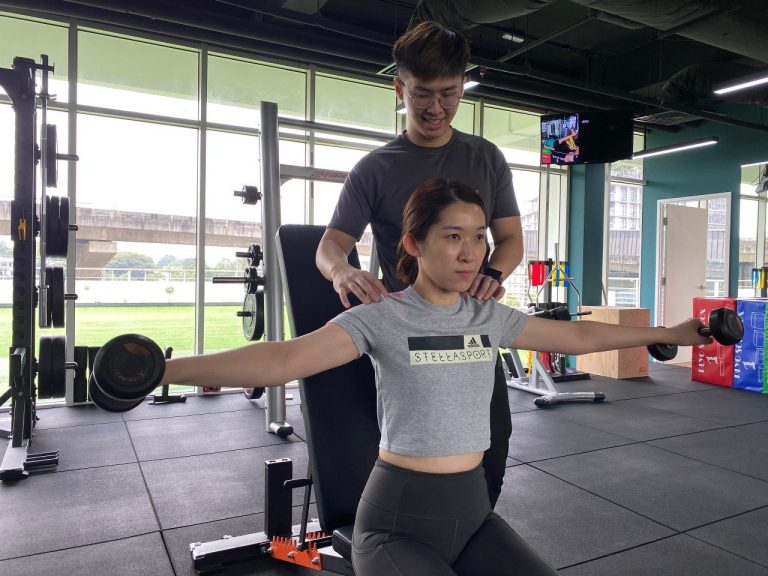
Let me explain why strengthening is so important for rotator cuff injuries.
Imagine your rotator cuff like the cables supporting a suspension bridge. If one cable is damaged, the bridge becomes unstable. You can patch the cable (that’s what passive treatment does), but until you strengthen the whole support system, the bridge remains vulnerable.
Strengthening does several critical things:
Builds tissue resilience
When you progressively load your tendons, they adapt and become stronger. This is basic biology. Load creates adaptation. Your rotator cuff heals stronger when you challenge it appropriately.
Corrects muscle imbalances
Most rotator cuff injuries happen because some muscles are too weak and others are compensating. We identify these imbalances and fix them through targeted strengthening.
Improves movement patterns
Your brain controls your movement. If you’ve been moving poorly (maybe to avoid pain, maybe from poor technique), we need to retrain better patterns. Strengthening with proper form teaches your brain the right way to move.
Prevents recurrence
Here’s the truth: passive treatment alone has high recurrence rates. People feel better, go back to their activities, and get injured again. Why? Because nothing fundamentally changed. Their shoulder is still weak and vulnerable. Strengthening creates lasting change.
Empowers you
When you understand exercises and can manage your own shoulder health, you’re not dependent on treatments. You have control. This is incredibly valuable.
This is why our approach works. We don’t just make you feel better temporarily. We make you stronger, more resilient, and less likely to have this problem again.
Rotator Cuff Injuries Treatment and Recovery Timeline
One of the most common questions we hear: “How long until I’m better?”
The honest answer is that it depends. But here’s what you can typically expect when you work with us at ONI Physio Fitness.
What to Expect: Your Recovery Journey at ONI Physio Fitness
Week 1-2: Initial Phase
These first two weeks are about settling things down and starting the healing process.
Focus: Pain reduction and inflammation control
Frequency: 2 to 3 sessions per week
What happens: We use manual therapy and pain relief techniques to make you more comfortable. You’ll start gentle range of motion exercises that don’t aggravate your pain.
What you’ll do at home:
- Ice or heat (we’ll tell you which)
- Gentle pendulum exercises
- Pain free movement
- Activity modifications to protect your shoulder
What to expect: You should notice some pain reduction. You might not be pain free yet, but you should see progress.
Week 3-6: Early Rehabilitation
Your pain is improving. Now we can work on mobility and introduce early strengthening.
Focus: Restore full range of motion and begin gentle strengthening
Frequency: 2 sessions per week
What happens: We’re doing more active exercises now. You’ll use resistance bands and light weights. We’re working on your posture and scapular control.
What you’ll do at home:
- Daily mobility exercises
- Resistance band work for rotator cuff
- Scapular strengthening
- Continued activity modification but gradually doing more
Progress indicators: You should be able to lift your arm overhead without significant pain. Night pain should be much better or gone. You’re starting to feel stronger.
Week 7-12: Progressive Strengthening
This is where you really start to feel like yourself again.
Focus: Build rotator cuff strength and scapular stability
Frequency: 1 to 2 sessions per week
What happens: The training intensity increases. Heavier weights, more challenging exercises, longer holds. We’re also adding movements specific to your activities.
What you’ll do at home:
- Structured strengthening program
- Sport specific drills (if relevant)
- Continue building endurance
- Return to modified activities
Progress indicators: You should feel strong. Pain is minimal or gone. You’re able to do most daily activities without problems.
Week 13-16+: Return to Function
You’re ready to get back to everything you love doing.
Focus: Sport specific training, advanced strengthening, and prevention
Frequency: 1 session per week or less (you’re graduating!)
What happens: We simulate your sport or activity demands. We make sure your technique is solid. We build in extra resilience.
What you’ll do:
- Gradual return to full activities
- Advanced exercises to maintain strength
- Long term maintenance program
Progress indicators: You’re back to your sport or activities at full capacity. Your shoulder feels stable and strong. You have confidence in it.
Factors That Affect Your Timeline
Not everyone heals at the same pace. Here’s what influences recovery time:
Severity of injury: A partial tear heals faster than a full thickness tear. Early stage tendinopathy responds quicker than advanced degeneration.
Your age and general health: Younger people generally heal faster. Good nutrition, adequate sleep, and overall fitness help recovery.
Compliance with home program: This is huge. The patients who do their exercises consistently get better faster. It’s that simple.
Your activity demands: If you need to return to high level athletics, rehab takes longer than if you just want to manage daily activities comfortably.
Other health factors: Smoking, diabetes, and certain medications can slow healing.
The timeline above is typical for partial tears and tendinopathy. Full thickness tears might take 6 months or more. Severe cases might need longer.
The good news? Every week you’re getting better. Progress might be slow sometimes, but it’s happening.
Home Care Tips for Rotator Cuff Injuries
What you do at home matters just as much as what we do in the clinic. Here’s how to help your shoulder heal faster.
Ice vs Heat: When to Use Each
Ice: Use in the first 48-72 hours after injury or after activities that aggravate your shoulder. Apply for 15-20 minutes. Ice reduces inflammation and numbs pain.
Heat: Use for chronic pain and stiffness. Heat relaxes tight muscles and increases blood flow. A warm shower before exercises can help mobility.
Pro tip: Many people benefit from alternating. Ice after exercise or activity, heat before stretching or when you’re stiff.
Sleep Positioning
Night pain is miserable. Here’s how to sleep better:
Avoid sleeping on the affected shoulder. This compresses already irritated tissues.
Sleep on your back with a pillow under your elbow to support your arm.
If you must sleep on your side, sleep on the good side with a pillow between your arms.
Try a supportive pillow that keeps your neck aligned. Poor neck position can refer pain to your shoulder.
Ergonomic Modifications for Your Home Office
Most KL professionals work from home at least part time. Your setup matters.
Screen height: Top of your screen at or slightly below eye level. If you’re looking down at a laptop all day, your posture will suffer.
Keyboard position: Elbows at 90 degrees, forearms supported. Don’t reach forward for your keyboard.
Chair support: Your lower back should be supported. Sit all the way back in your chair.
Take breaks: Stand up and move every 30-45 minutes. Set a timer if you need to.
Mouse position: Close to your body. If you’re reaching for your mouse, you’re creating shoulder stress.
Activity Modification
You don’t need complete rest, but you do need to be smart.
Avoid:
- Heavy overhead lifting
- Repetitive overhead movements
- Carrying heavy bags on the affected side
- Sleeping on the injured shoulder
- Activities that cause sharp pain
Safe to do:
- Walking (great for overall health)
- Lower body exercises at the gym
- Swimming (once your physio clears you)
- Modified daily activities
- Pain free movements
Warning Signs to Seek Immediate Care
Most rotator cuff injuries improve with treatment. But if you experience these symptoms, contact us immediately:
- Sudden severe pain and inability to move your arm
- Visible deformity of your shoulder
- Complete loss of arm function
- Signs of infection (fever, redness, warmth)
- Pain that’s getting progressively worse despite treatment
Your home care routine should complement what we’re doing in the clinic. When you take care of your shoulder properly at home, you heal faster and feel better sooner.
Physiotherapy vs Surgery for Rotator Cuff Injuries
This is a big decision. Should you try physiotherapy or go straight to surgery? Let’s break down what the research and our clinical experience tell us.
When Should You Consider Surgery?
First, the good news.
80 to 90% of rotator cuff injuries respond well to conservative treatment. That means physiotherapy, exercises, and activity modification. No surgery needed.
Studies consistently show that physiotherapy is highly effective for:
- Partial thickness tears
- Tendinopathy (degenerative changes)
- Subacromial Impingement Syndrome
- Small to medium full thickness tears
- Rotator cuff injuries in older adults
In fact, research comparing surgery to physiotherapy for many rotator cuff injuries shows similar outcomes at one year and beyond. But physiotherapy gets you there faster, with less risk, and at lower cost.
When Surgery May Be Necessary
Surgery might be the right choice if:
Complete tears in young, active individuals: If you’re under 50, very active, and have a full thickness tear from acute trauma, early surgery might give better results.
Significant functional limitation despite 3-6 months of physiotherapy: If you’ve genuinely committed to physio for several months with minimal improvement, surgery becomes an option worth discussing.
Acute traumatic tears in athletes: If you’re a competitive athlete who suffered a complete tear during competition, early repair might be important for returning to sport.
Progressive weakness despite treatment: If your shoulder is getting weaker rather than stronger with proper physiotherapy, this suggests the tear might be too large to heal conservatively.
Large or massive tears: Tears involving multiple tendons or very large tears (over 5 cm) sometimes need surgical repair, though even some of these respond to physiotherapy.
Why Try Physiotherapy First
There are compelling reasons to start with physiotherapy before considering surgery:
It’s non invasive: No surgical risks, no anesthesia complications, no infections. You’re not cutting into your body.
Faster return to activities: With physiotherapy, you can often return to normal activities in 3-4 months. With surgery, you’re looking at 6-12 months minimum.
Lower cost: Surgery, hospital stays, and lengthy post-op physio are expensive. Conservative treatment costs a fraction of surgical intervention.
No point of no return: If physiotherapy doesn’t work, surgery is still available. But once you have surgery, you can’t undo it.
Even if you need surgery eventually, pre-hab helps: If you do end up needing surgery, being stronger going into it leads to better post-operative outcomes. You’re not losing anything by trying physiotherapy first.
Post Rotator Cuff Surgical Physiotherapy at ONI Physio Fitness
If you do have surgery, we’re here for your post-operative rehabilitation.
Post-surgical physio follows a similar but extended protocol:
- Phase 1 (weeks 1-6): Passive movement only, protecting the repair
- Phase 2 (weeks 6-12): Active movement, very gentle strengthening
- Phase 3 (weeks 12-20): Progressive strengthening
- Phase 4 (months 5-12): Return to full function
We work closely with your surgeon to follow their protocol while optimizing your recovery. Our experience with post-operative rotator cuff patients means we know exactly how to progress you safely and effectively.
Prevention: Protecting Your Shoulders in Kuala Lumpur
They say an ounce of prevention is worth a pound of cure. With rotator cuff injuries, it’s more like a pound of prevention is worth a ton of cure. Let’s talk about how to keep your shoulders healthy.
Injury Prevention Strategies for KL Lifestyles
For Office Workers
If you work at a desk (whether at the office or home), your shoulders are at risk. Here’s how to protect them:
Proper desk ergonomics:
- Monitor at eye level (use a laptop stand if needed)
- Keyboard and mouse close to your body
- Elbows at 90 degrees
- Feet flat on the floor
- Lower back supported
Regular movement breaks:
Set a timer for every 30-45 minutes. Stand up, walk around, move your arms. Your body wasn’t designed to sit still for 8 hours.
Posture awareness:
Check in with yourself throughout the day. Are your shoulders rounded forward? Is your head jutting forward? Pull yourself back into good alignment.
Daily shoulder mobility routine:
Spend 5 minutes every morning doing shoulder circles, arm reaches, and gentle stretches. This maintains mobility and wakes up the muscles.
Strengthen your back:
Your upper back muscles fight against the forward pull of desk work. Rows, reverse flys, and scapular exercises should be part of your routine.
For Athletes and Gym Goers
Love staying active? Great. Here’s how to do it safely:
Proper warm up protocols:
Yes, even in KL’s hot weather, you need to warm up. Spend 10 minutes doing dynamic stretches and movements that mimic what you’re about to do. Get your muscles firing properly before you load them.
Balanced training programs:
Don’t just do what you enjoy. Do what you need. If you love bench pressing, you better be doing rows too. For every pushing exercise, do a pulling exercise. Your shoulders need balance.
Progressive loading:
Don’t jump from 20 kg to 40 kg in one week because you feel good. Increase weights gradually (5-10% per week maximum). Tendons adapt slowly. Give them time.
Recovery strategies:
You don’t grow stronger during workouts. You grow stronger during recovery. Get adequate sleep, eat enough protein, take rest days seriously.
Common gym mistakes that cause rotator cuff injuries:
- Too much chest and shoulder work, not enough back work
- Poor form on overhead presses
- Going too heavy too soon
- Neglecting rotator cuff strengthening
- Skipping warm ups
For Badminton and Racquet Sport Players
Badminton is huge in KL. It’s also tough on shoulders if you’re not careful:
Technique assessment:
Poor smash or serve technique puts enormous stress on your rotator cuff. Consider working with a coach to refine your form. Small technique changes make a big difference.
Sport specific strengthening:
Your shoulder needs to be strong in the specific positions your sport demands. Regular gym work helps, but sport-specific exercises are critical.
Pre-game warm up routine:
Never walk onto the court cold. Do dynamic arm swings, gentle serves, gradual intensity buildup. Your first smash shouldn’t be at full power.
Equipment considerations:
Racquet weight, grip size, and string tension all affect shoulder stress. If you’re having problems, ask someone knowledgeable about your equipment.
Don’t play through pain:
That nagging shoulder discomfort won’t go away by ignoring it. It’ll get worse. Address problems early before they become serious injuries.
For Everyone: Universal Prevention Strategies
These apply whether you’re an athlete, office worker, or both:
Maintain shoulder flexibility and strength:
Do shoulder exercises 2-3 times per week. Internal rotation, external rotation, and scapular strengthening are essential. If you’re not sure what to do, we can teach you.
Address postural dysfunction early:
If you notice your shoulders rounding forward or your upper back hunching, fix it now. Don’t wait until you have pain. Posture problems lead to impingement, which leads to tears.
Listen to your body:
Pain is a signal, not something to push through. If your shoulder hurts, figure out why. Modify or rest as needed. Tough it out mentality leads to serious injuries.
Regular movement screening:
Come in for a check-up even when you don’t have pain. We can spot movement problems before they cause injuries. Think of it like a dental check-up for your shoulders.
Stay generally fit:
Overall fitness helps everything. Cardiovascular health improves healing capacity. Core strength supports your shoulders. Flexibility reduces injury risk.
Prevention isn’t exciting. It doesn’t feel urgent. But spending 30 minutes a week on shoulder health beats spending 3 months recovering from an injury.
Conclusion
Rotator cuff injuries can be frustrating and painful, but they don’t have to control your life. With the right approach, most people recover fully and return to everything they want to do.
Here’s what you need to remember:
Rotator cuff injuries are common and treatable. You’re not alone in dealing with this, and there’s a clear path forward.
Early intervention leads to better outcomes. The sooner you address the problem, the faster and more completely you’ll recover. Don’t wait until it becomes severe.
Physiotherapy should be your first choice. 80-90% of rotator cuff injuries respond well to conservative treatment. Surgery is rarely necessary as a first option.
Strengthening is key. Passive treatments help initially, but long-term success comes from building strength and resilience in your shoulder.
The ONI Physio Fitness difference is real. Our holistic, strengthening-focused approach doesn’t just reduce pain. It creates lasting change. We address the root cause, not just symptoms. We empower you with knowledge and exercises. We get you back to the activities you love.
Whether you’re dealing with shoulder clicking, night pain, weakness, or you’ve been told you have a rotator cuff tear, there’s hope. The right treatment makes all the difference.
Don’t let shoulder pain limit your life any longer.
Book A Rotator Cuff Physiotherapy Session with ONI Physio Fitness
Ready to fix your shoulder? Contact ONI Physio Fitness in Mont Kiara for a comprehensive rotator cuff assessment. Our experienced physiotherapists specialize in rotator cuff injuries treatment and will create a personalized recovery plan that gets you back to full function.
📞 WhatsApp or Call us: +601123291029
We offer flexible scheduling including evening and weekend appointments to accommodate your busy lifestyle.
What to expect at your first visit:
- Comprehensive 45-60 minute assessment
- Clear explanation of your condition
- Personalized treatment plan
- Start of your recovery journey
- All your questions answered
Don’t wait for your shoulder to get worse. Book your appointment today and take the first step toward a pain-free, strong shoulder.
Frequently Asked Questions About Rotator Cuff Injuries
How long does it take to recover from rotator cuff injuries?
Recovery time varies based on severity, but most people see significant improvement in 6-12 weeks with proper physiotherapy. Partial tears and tendinopathy typically recover in 8-12 weeks. Full thickness tears may take 3-6 months. Your age, overall health, and compliance with exercises all affect timeline.
Can rotator cuff injuries heal without surgery?
Yes! 80-90% of rotator cuff injuries heal well with physiotherapy. Even many full thickness tears can be managed conservatively with good outcomes. Surgery is usually only needed for large traumatic tears in young people, or if physiotherapy fails after several months.
What's the difference between a rotator cuff tear and impingement?
Impingement (or Subacromial Impingement Syndrome) is when your rotator cuff tendons get pinched in the space under your acromion bone. This causes inflammation and pain but the tendon is still intact. A tear means the tendon has actually been damaged, either partially or completely. Impingement often leads to tears if not addressed.
How much does rotator cuff injuries physiotherapy cost in Kuala Lumpur?
Costs vary by clinic and treatment needed.
At ONI Physio Fitness, we offer transparent pricing and will discuss costs during your initial consultation.
Our first session is RM265, but first-timers will enjoy a 30% discount, which is only RM185.50 (plus 6% SST for non-Malaysians).
The first session includes:
- Assessment
- Treatment
- Exercise
- Consultation
The following sessions are RM165-RM220/session, depending on your condition.
*Additional 6% SST for non-Malaysians.
Should I stop exercising with a rotator cuff injury?
No, complete rest usually isn’t necessary. You should avoid activities that cause sharp pain or overhead movements initially. But staying generally active and doing appropriate exercises actually helps healing. We’ll guide you on what’s safe and what to avoid based on your specific injury.
What causes shoulder clicking with rotator cuff injuries?
Clicking can come from several sources: the tendon sliding over bone, scar tissue, inflammation, or gas bubbles in the joint. It’s not always concerning. If clicking is painless, it’s usually harmless. If it’s painful or associated with weakness, it needs assessment.
Can I play badminton with a rotator cuff injury?
Not initially. Badminton involves explosive overhead movements that will aggravate most rotator cuff injuries. During early treatment, you need to avoid overhead sports. As you heal and strengthen (usually 8-12 weeks), you can gradually return to badminton with proper progression.
Is physiotherapy painful for rotator cuff injuries?
Treatment itself shouldn’t be very painful. Manual therapy might cause some discomfort, but it should be tolerable. Exercises should be pain-free or cause minimal discomfort (2/10 at most). If treatment is causing significant pain, something’s wrong. Communication with your physiotherapist is key.
Remember: This blog post provides general information about rotator cuff injuries. Every case is unique, and proper assessment by a qualified physiotherapist is essential for accurate diagnosis and appropriate treatment.
If you’re experiencing shoulder pain, don’t self-diagnose or delay treatment. Book an assessment at ONI Physio Fitness in Mont Kiara today. Let’s get your shoulder healthy and strong again.
Your journey to a pain-free shoulder starts here.

